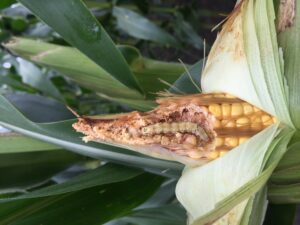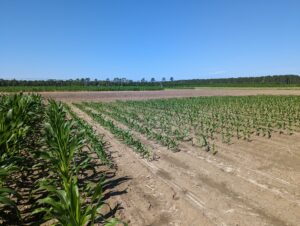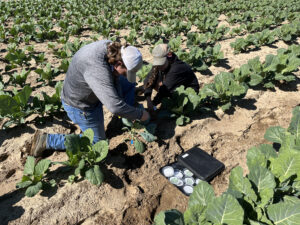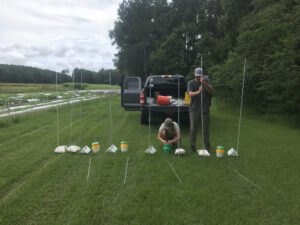Contributing Author: Dr. Francis Reay-Jones
More than 80% of field corn grown in the U.S. has been genetically engineered to express one or more insecticidal toxins from Bacillus thuringiensis, called Bt toxins. Bt corn was first commercialized in the U.S. in 1996, expressing a single Bt toxin targeting the European corn borer. Newer Bt corn hybrids express two or more Bt toxins, which has increased the number of target pests to include the corn earworm and the fall armyworm. Benefits of planting Bt corn can include protecting yield from insect damage, reducing the need to use insecticide, and improved grain quality. However, such benefits can be impacted by the development of resistance in target insects.

Dr. Francis Reay-Jones is continuing this year to evaluate the efficacy of Bt traits and the impact Bt toxins have on the life cycle of the corn earworm, with implications on resistance evolution. “We have been conducting field efficacy trials with a range of Bt traits since 2009. Since then, we have seen some traits become less effective over time because corn earworm has developed resistance. We saw in particular a shift in 2015 when resistance to some of the Cry toxins expressed in Bt corn became more widespread not just in South Carolina, but across the southeastern U.S.” Although the corn earworm is generally not a significant economic pest of field corn, the same species is a serious pest in cotton, where it is known as bollworm. Because Bt cotton expresses the same or similar toxins as Bt corn, selection for resistance in Bt corn is likely driving resistance issues to Bt cotton. “Planting a non-Bt refuge is the only tool we have to manage resistance. Preventing resistance development in Bt corn is crucial so that the insect does not cause more damage to Bt cotton later in the season, where the corn earworm (or bollworm) is a major economic pest.”

While resistance in corn earworm is widespread to most Cry toxins used in Bt corn and Bt cotton, one toxin, called Vip3A, remains highly effective. Trials in South Carolina continued this year to evaluate Bt corn hybrids expressing Vip3A. Examination of hundreds of corn ears in 2023 showed that these hybrids remain highly effective, with no ear injury found due to corn earworm feeding. In corn, this toxin is expressed in Trecepta, Optimum Leptra, and Agrisure Viptera products. While Vip3A remains effective, reports of unexpected injury in recent years in the mid-south underline the need for continued resistance monitoring. Vip3A toxins are also expressed in new Bt cotton varieties, and planting of non-Bt refuge in corn is crucial, since only a single Bt toxin is currently available with very good activity for this key pest.




